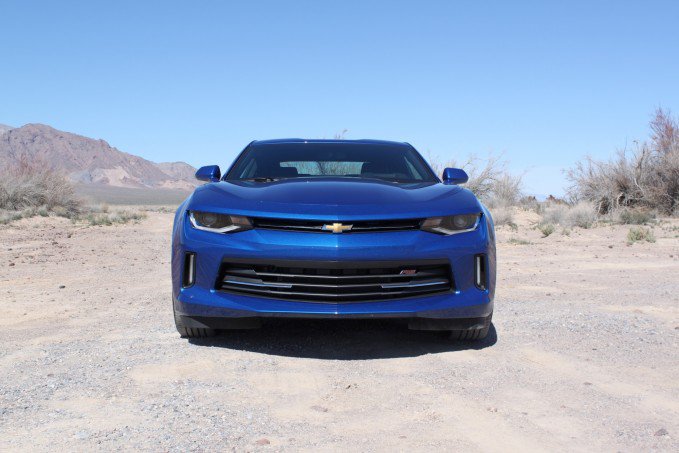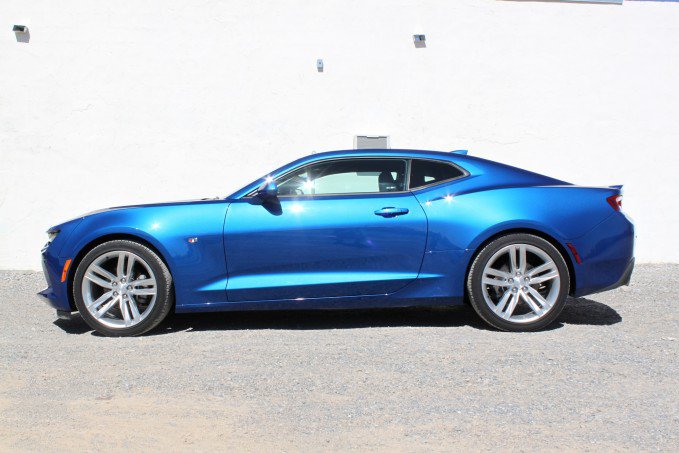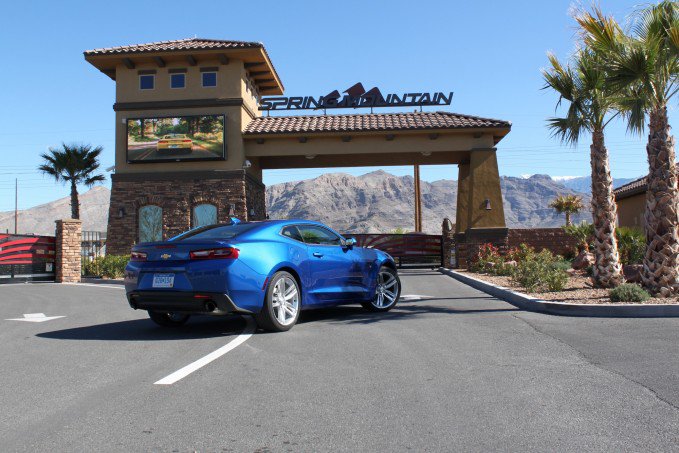Muscle cars used to be adhere to the “bigger is better” philosophy.
But today, catchphrases like “there’s no replacement for displacement” are being muted by ideas like “work smarter, not harder,” especially in the muscle car segment.
As fuel mileage continues to be a top concern among buyers, automakers have been advancing their turbocharged powertrains and cutting weight from their vehicles, ensuring that vehicles are as efficient as possible. And as the EcoBoost four-cylinder-powered Mustang proved, efficient cars don’t always have to sacrifice performance.
Starting with the 2015 model year Mustang, Ford offered an upgraded engine that slotted between the usual V6 and V8 motors and was available with a performance package. A 2.3-liter four-cylinder turbocharged engine made marginally more horsepower than the V6, but much more torque. It also promised improved fuel economy over the V6. Muscle car traditionalists decried the decision to include a four-cylinder, but strong sales of the EcoBoost have told a different story.
The Chevrolet Choice
The 2016 Chevrolet Camaro is following the Ford Mustang by offering a turbo-four in its pony car, but instead uses a 2.0-liter turbocharged motor as the base engine, rather than the mid-level offering. Another departure from the Mustang is that the four-cylinder turbo model won’t be available with a full performance package. Drivers can, however, get upgraded brakes and cooling features.
Fortunately, the sixth-generation Camaro has a number of improvements that make it a solid performer out of the box, with many thanks to the new Alpha platform. First used as the underpinning to the sharp Cadillac ATS sedan, the new Camaro is significantly lighter than the past generation model and is, on average, about 202 pounds lighter than the last generation V6 and V8 models. The new turbo-four model is a whopping 390 lbs lighter than the old V6 model, making it noticeably more nimble and agile.
ALSO SEE: Why is the Chevrolet Camaro So Hard to See Out Of?
A quick back-to-back track comparison of the 2015 Camaro V6, 2016 Mustang V6 and 2016 Camaro 2.0T demonstrated the new generation’s advancements in terms of handling, especially in its ability to change directions quickly and handle elevation changes. When driven back-to-back with the new Mustang V6, the Camaro felt stiffer and more responsive, while the Mustang felt large and floaty on the track. Lighter and more rigid, the new Camaro feels confident and more like a real sports coupe when pushed to its limit.
If You Stay with the Turbo
The Camaro 2.0T makes 275 hp and 295 lb-ft of torque, which is less power than the last-generation base V6 engine and the new Mustang V6. Despite the mundane figures, this model can rifle off to 60 mph in 5.5 seconds (5.4 in the manual), showcasing just how much of an impact the lighter curb weight has on performance. For reference, the manual EcoBoost Mustang with the optional performance pack managed this sprint in about 5.5 to 5.6 seconds, while automatic Mustang EcoBoosts are a hair under 6 seconds.
On the track, the car provided torque right when you wanted it, as the car’s flat torque curve starts delivering peak torque at 3,000 rpm, which is right in the middle of the rev range. The motor easily pushed the car through the short circuit at Spring Mountain Motor Sports Park. The combination of light weight, responsive handling and rear-wheel drive was more than capable of helping the car rotate through tight turns on the track. Also, it’s important to mention that the exhaust note of the 2.0T Camaro is real (not piped in) and sounds more refined than what the noises EcoBoost Mustang pipes out.
Furthermore, the punch off the line with the 2.0T will erase any bitter memories of the third-generation Camaro with its sad 2.5-liter four-cylinder that hit 60 mph in about 20 seconds. Chevrolet also made us aware that this new 2.0T matches the fourth-generation Camaro Z28 (with its 5.7-liter V8) in horsepower and performance figures.
While power is sent to the rear wheels, buyers can opt for a solid six-speed manual or an eight-speed automatic. The automatic option is a great choice for those looking for a daily cruiser with highway fuel consumption estimates in the 31 mph range, while city driving will net about 22 mpg. Testing of the manual transmission was limited to the track, where it performed admirably and featured great pedal placement for heel-toe downshifts. Buyers of the manual model can expect to see 21 mpg city and 30 mpg highway.
Fully Featured
Where the Camaro clearly one-ups its rival pony car is with available features. While premium features like navigation have to be matched to a higher-trim engine in the Mustang, the Camaro offers all the goodies across the range. As such, you could have a four-cylinder Camaro with a head-up display, heated and vented seats, heated steering wheel, blind-spot assist, a sunroof, dual-zone automatic climate control, leather upholstery and basically any other feature found throughout the range. If a buyer wants a fully loaded Camaro but with the fuel-efficient and lightweight turbocharged engine, they’re free to do exactly that.
ALSO SEE: 2016 Chevrolet Camaro Review
While we’ve covered the interior before, it’s important to point out how hit and miss it is. Certain aspects of the interior like the climate control knobs and the high quality chrome trim on the door handles and around the shifter are excellent. On the other hand, the dashboard and upper door panel trim is notably low-rent feeling. The touchscreen found in the middle is also awkwardly slanted, which was ineffective in reducing glare. Finally, as with the last Camaro, visibility is awful, the proportions of the car take some getting used to, and there’s also a very small trunk opening.
Pricing
The Camaro starts at $26,695 including destination and includes the 2.0T as standard equipment. It’s slightly pricier than the base Mustang V6, which rings in at $25,045, which is more also powerful, but is limited in its available features. A fully loaded Camaro 2.0T would be an automatic 2LT model with the RS Package, additional ground-effects trim, upgraded brakes and navigation, and would cost you more than $40,000. It’s a bit much, but it’s all there if buyers are interested.
Verdict: 2016 Chevrolet Camaro 2.0T Review
Consumer choice is always a good thing, and this new four-cylinder option will appeal to muscle car fans looking for a fuel-friendly option that’s still responsive and fun to drive, even at the basic end of the model lineup. The fact you can load it up with all the features you want is a huge bonus.
Discuss this story on our Chevrolet Camaro Forum












